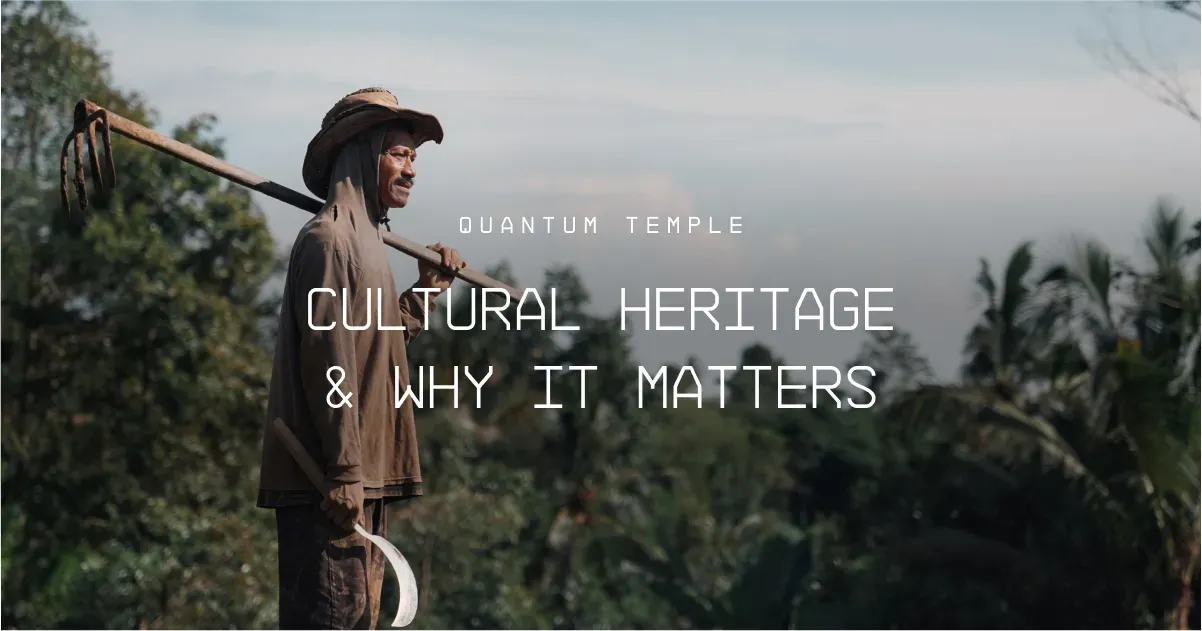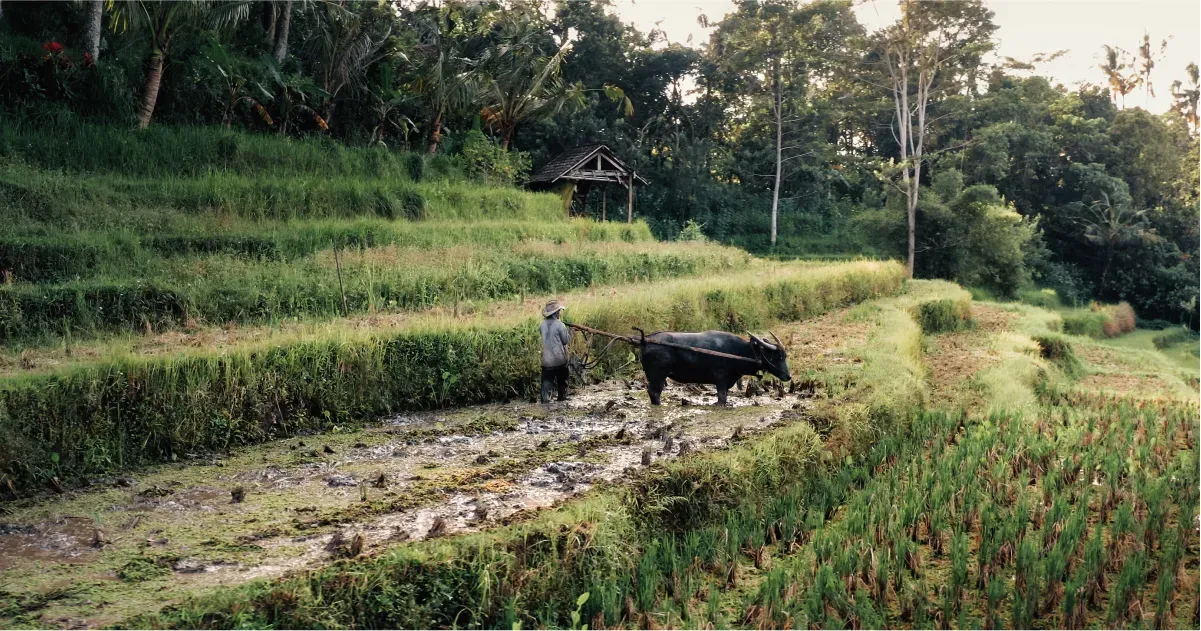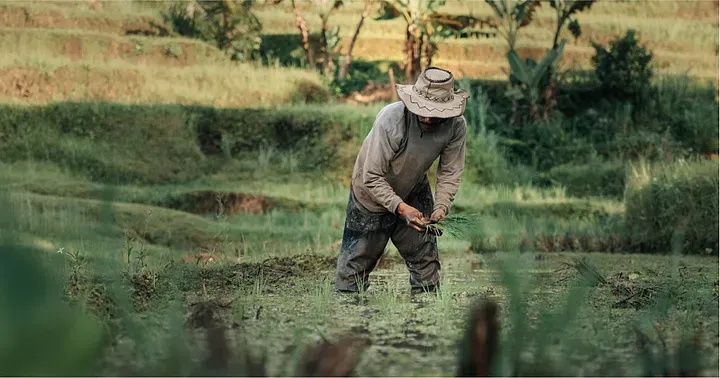Cultural Heritage and Why It Matters
Today’s world is rife with uncertainty. Paradoxically, we spend more time on social media, but feel more distant from each other; more connected to the world, yet disconnected from its roots. Understanding the value of cultural heritage has never been more important.

Today’s world is rife with uncertainty. Paradoxically, we spend more time on social media, but feel more distant from each other; more connected to the world, yet disconnected from its roots. Following a global pandemic and increased cultural clashes, understanding the value of cultural heritage has never been more important.
Cultural heritage encompasses our belief system, our identities, or our histories — it’s the glue that binds people in society. Not only does cultural heritage enrich us by creating a tangible form of cohesion for communities to organize around; it also provides practical advantages such as employment opportunities for local communities.

The Value of Cultural Heritage
Cultural heritage is more than just history or tradition; it’s a way to connect to our past and build a better future. It creates continuity and alternative opinions, allowing us to keep a diversity of worldviews. The Western modernity value system is increasingly falling apart, prompting the need for alternative value systems that look to our culture heritage to fill in the gaps.
It is also a way to celebrate the importance of other cultures and foster appreciation and respect for diversity. Our cultural heritage is a reminder of how interconnected we are: We all share a common history, no matter how distant in time or space. We can learn from our past, and use it to create a brighter future.
It comes as no surprise, then, that the destruction of cultural heritage was found to be an early warning sign of an atrocity to come. Cultural heritage is an expression of human identity and, as such, its destruction can be seen as a form of violence. The corollary of this is that the protection, dissemination, and cross-cultural dialogues can build more cohesion and peace.
At Quantum Temple, we are committed to protecting and sharing knowledge, traditions, and art forms of cultures around the world in perpetuity through blockchain technology. We believe tangible and intangible heritage must be preserved and nurtured; and we’re committed to doing so transparently and equitably, by building the first decentralized record of cultural heritage on the blockchain.

Practical Advantages of Preserving and Revitalizing Cultural Heritage
The practical advantages of preserving cultural heritage are undeniable. According to the World Economic Forum, the creative cultural sector is the 2nd largest employer in the developing world.
Cultural travel also represents 40% of tourism; it emphasizes experiences within a foreign culture to discover ways of life passed down from generation to generation; including customs, practices, places, objects, expressions, and artistic values.
A paper by the European Expert Network on Culture describes a wider range of economic effects related to preserving cultural heritage, such as city regeneration, the development of the creative or knowledge economy, and the marketing of cultural activities.
In particular, the creative and knowledge economy stemming from cultural heritage is an important economic driver, covering a wide range of activities such as craftsmanship, fashion design, art production, intellectual property law, cultural education, and more. It is a key factor in local economic development and job creation. Tying in with the creative economy, cultural heritage can also help increase a city’s appeal to businesses and entrepreneurs, drawing in more innovation and investment.
These benefits aren’t mere speculation; a recent survey found that 40% of respondents cite culture as the main motivation for travelling. After all, cultural heritage is what makes a destination unique.
The dollar value of this can be seen in the estimated potential global heritage market, which could provide up to 89 billion euros per year for developing countries by 2025, according to researchers from Stanford University. The broader heritage tourism market was valued at a tremendous 557 billion dollars in 2021.

Preserving the natural environment
Cultural heritage also preserves the natural environment through conservation efforts such as sustainable agriculture and forestry projects.
Dr. Julia Watson’s ”Our Time on Earth” exhibition encapsulates this idea, highlighting the need for localized solutions that take into account questions of sustainability, culture, and public health. Through her book “Lo-TEK: Design by Radical Indigenism,” she explores vernacular infrastructure across indigenous communities and shares how their radical ideas for the way we live can help us build a much improved future.
In the Dominican Republic, for instance, traditional farming practices and methods are being used to protect the local environment. Cacao farmers are using agroforestry systems to grow cacao trees among other plants. This helps keep soils fertile, preserve biodiversity, and decrease erosion.
Moreover, in New Mexico, local communities are using ancient irrigation systems that have been a part of their culture for centuries. These systems help them preserve water resources, prevent floods and drought, and protect native species. By preserving their cultural heritage, local communities are helping to protect the environment too.
For example, chinampas (or “floating gardens”) are an ingenious way of farming practiced by the Aztecs, which are still in use today. These gardens allow farmers to grow crops in shallow lakes, thus preventing soil erosion and preserving the natural environment.
Cultural heritage can also be used to promote environmental stewardship. In the United States, the National Park Service has leveraged the power of cultural heritage to promote conservation and sustainability. Through educational programs, the Park Service helps visitors understand the importance of protecting the environment. Additionally, the Park Service has established partnerships with local communities to help them preserve their cultural heritage, which also helps protect the natural environment.
Conclusion
Cultural heritage is more than just history — it’s a way to connect to our past and build a better future. It provides tangible benefits such as employment opportunities and contributes to environmental conservation efforts around the world. What’s more, it preserves our diversity of worldviews by creating continuity and fostering global cohesion.
One example of this is Julia Watson’s proposal to revalue the techniques of construction, production, cultivation and extraction carried out by diverse remote populations who, generation after generation, have managed to keep alive ancestral cultural practices integrated with nature. While modern societies tried to conquer nature in the name of progress, these indigenous cultures worked in collaboration with nature, understanding ecosystems and species cycles to articulate their architecture into an integrated and symbiotically interconnected whole.
Quantum Temple is committed to empowering ancestral communities and their cultural heritage. We are building a global community of Web3 philanthropists and culture patrons committed to protecting cultural heritage by funding physical and digital artifacts to positively impact ancestral communities.
Our community commits to building a decentralized record and marketplace where digital, physical, and experiential NFTs — that encode various forms of cultural heritage — are freely exchanged to amplify the stories of culture keepers and raise the awareness and recognition of their traditions, rituals, and art forms.